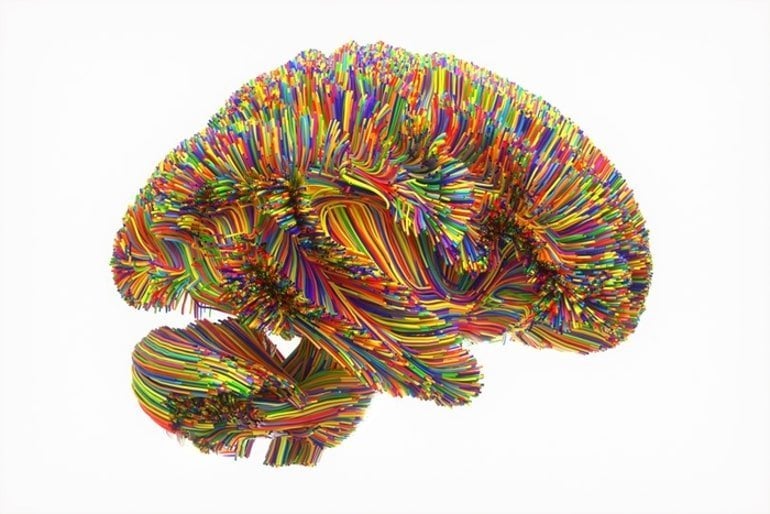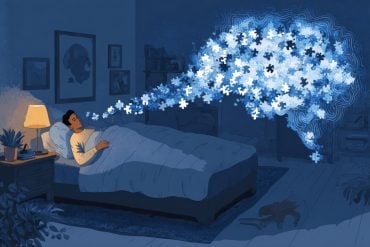Summary: mRNA decay may facilitate tau-induced damage to the brain and associated apoptosis that contributes to a range of neurodegenerative disorders. Researchers found the mechanism can be altered pharmacologically, providing a new target for the development of therapeutics to prevent or slow the progression of some neurodegenerative disorders.
Source: UT San Antonio
Researchers from The University of Texas Health Science Center at San Antonio (UT Health San Antonio) today reported the discovery of a novel mechanism by which pathological forms of tau protein cause neurons to die. Alzheimer’s disease and chronic traumatic encephalopathy (CTE) are among more than 20 disorders that include tau protein pathology.
The newly found mechanism of tau-induced damage can be altered pharmacologically, the scientists noted, making it a novel target for drug development.
The study, published in Alzheimer’s & Dementia: The Journal of the Alzheimer’s Association, “provides a framework for future studies in vertebrate models of tauopathy and eventually clinical trials in people,” first author Gabrielle Zuniga said. Zuniga is an MD/PhD student in the South Texas Medical Scientist Training Program offered jointly by the Joe R. and Teresa Lozano Long School of Medicine and the Graduate School of Biomedical Sciences of UT Health San Antonio.
“The fact it is a druggable target is really exciting, and it is a new mechanism that wasn’t previously established,” Zuniga said.
An early event, before neurons die
Working with a fruit fly that expresses mutant human tau, the scientists observed deficits in an RNA quality-control pathway known as nonsense-mediated mRNA decay. “This is an early event,” Zuniga said. “These changes in RNA quality control occurred long before neuronal cell death.”
“Nonsense-mediated mRNA decay is a key step in the process by which genetic information is translated into proteins,” Zuniga said. Impairment of this quality-control mechanism results in buildups of RNA and production of abnormal, dysfunctional proteins. “It has an absolutely detrimental effect,” Zuniga said.
DNA (a molecule called deoxyribonucleic acid) contains the genetic blueprints for proteins. Messenger RNA (ribonucleic acid) reads out the blueprints to make proteins. This information highway becomes logjammed when nonsense-mediated mRNA decay is reduced.
“We are focusing on how cells clear faulty RNAs, and how this RNA quality control mechanism goes awry in disease. If these types of RNAs accumulate in a cell and are translated into proteins, bad things can happen,” said senior author Bess Frost, PhD, Bartell Zachry Distinguished Professor for Research in Neurodegenerative Disorders at UT Health San Antonio. Dr. Frost, associate professor of cell systems and anatomy, is a member of the health science center’s Sam and Ann Barshop Institute for Longevity and Aging Studies and the Glenn Biggs Institute for Alzheimer’s and Neurodegenerative Diseases.
Going beyond tau deposition
Treatments for Alzheimer’s disease and other tauopathies have failed in part because they focused on clearing tau protein or another protein called amyloid beta. Amyloid beta plaques and tau tangles are classic hallmarks of Alzheimer’s.
“Rather than targeting tau deposition, which is late in the disease process, why don’t we stop the pathways that are actually causing the neurons to die?” said Sudha Seshadri, MD, professor of neurology in the Long School of Medicine and founding director of the Glenn Biggs Institute.
“This appears to be one of those pathways, and its discovery is a brilliant piece of detective work by Gabrielle Zuniga, Dr. Frost and the team.”

Dr. Seshadri and Dr. Frost are investigators of the South Texas Alzheimer’s Disease Research Center, a recently awarded National Institutes of Health Center of Excellence that is a partnership of UT Health San Antonio and UT Rio Grande Valley. It is the only designated Alzheimer’s Disease Research Center in Texas.
Identifying multiple mechanisms underlying tau (and amyloid beta) pathology could result in understanding which patients might benefit from which therapies, said Nicolas Musi, MD, professor of medicine at UT Health San Antonio and director of the Sam and Ann Barshop Institute. A subset of Alzheimer’s disease patients might be responsive to a drug that increases nonsense-mediated mRNA decay, for example.
MD/PhD student
First author Zuniga completed two years in the Long School of Medicine before embarking on her Doctor of Philosophy studies. She is a June candidate for her PhD degree and will return to medical school in the fall for years three and four of her journey to become a physician. Originally from Chapel Hill, N.C., she is a 2015 graduate of The University of Texas at Austin.
“Gabbe exemplifies the brilliance of our MSTP students who undertake this ambitious, dual-degree academic medicine path and who have the determination to serve humanity by conducting rigorous translational research that makes lives better,” said Jose E. Cavazos, MD, PhD, professor of neurology and assistant dean of the South Texas Medical Scientist Training Program (MSTP).
Translating life sciences discoveries into practical applications aligns perfectly with the standing of The University of Texas Health Science Center at San Antonio as the largest research university in South Texas with an annual research portfolio of approximately $350 million.
Funding: This project was supported by multiple National Institutes of Health grant awards: R01 AG057896 (to Dr. Bess Frost) and T32 AG021890, T32 GM113896, TL1 TR002647, and T32 NS082145 (to Gabrielle Zuniga).
About this neurodegeneration research news
Author: Will Sansom
Source: UT San Antonio
Contact: Will Sansom – UT San Antonio
Image: The image is credited to UT San Antonio
Original Research: Open access.
“Tau-induced deficits in nonsense-mediated mRNA decay contribute to neurodegeneration” by Gabrielle Zuniga, Simon Levy, Paulino Ramirez, Jasmine De Mange, Elias Gonzalez, Maria Gamez and Bess Frost. Alzheimer’s & Dementia
Abstract
Tau-induced deficits in nonsense-mediated mRNA decay contribute to neurodegeneration
Introduction
While brains of patients with Alzheimer’s disease and related tauopathies have evidence of altered RNA processing, we lack a mechanistic understanding of how altered RNA processing arises in these disorders and if such changes are causally linked to neurodegeneration.
Methods
Using Drosophila melanogaster models of tauopathy, we find that overall activity of nonsense-mediated mRNA decay (NMD), a key RNA quality-control mechanism, is reduced. Genetic manipulation of NMD machinery significantly modifies tau-induced neurotoxicity, suggesting that deficits in NMD are causally linked to neurodegeneration. Mechanistically, we find that deficits in NMD are a consequence of aberrant RNA export and RNA accumulation within nuclear envelope invaginations in tauopathy. We identify a pharmacological activator of NMD that suppresses neurodegeneration in tau transgenic Drosophila, indicating that tau-induced deficits in RNA quality control are druggable.
Discussion
Our studies suggest that NMD activators should be explored for their potential therapeutic value to patients with tauopathies.







